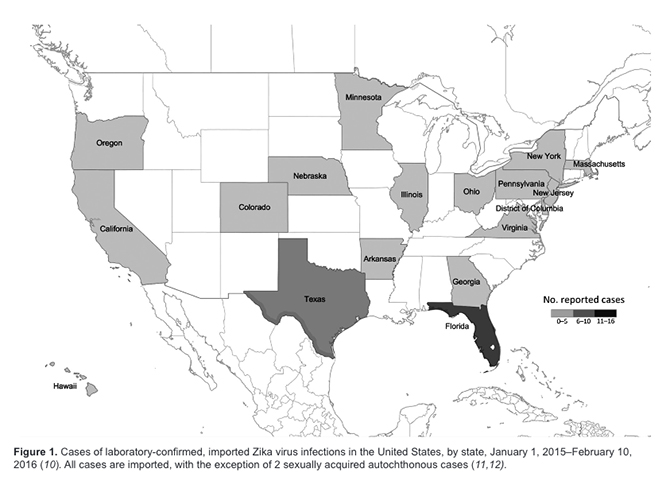We are now part of Zika Care Connect Network, a professional network containing healthcare resources. This site links to all the journal article updates and has additional resources on Zika.
Latest news from the CDC Morbidity and Mortality Weekly Report (MMWR)
Suspected Female-to-Male Sexual Transmission of Zika Virus – New York City, 2016 – Full Story Here
Early Release / July 15, 2016 / 65
Davidson A, Slavinski S, Komoto K, Rakeman J, Weiss D. Suspected Female-to-Male Sexual Transmission of Zika Virus — New York City, 2016. MMWR Morb Mortal Wkly Rep. ePub: 15 July 2016. DOI: http://dx.doi.org/10.15585/mmwr.mm6528e2.
Summary: The New York City Department of Health and Mental Hygiene recently reported a suspected female-to-male sexual transmission of Zika virus. A woman engaged in sex without a condom with a male partner the day she returned to NYC from travel to an area with ongoing Zika virus transmission. Her serum and urine later tested positive for Zika virus RNA. Seven days after intercourse with the woman, the male partner developed Zika-related symptoms. Zika virus RNA was detected in his urine but not serum. An extensive interview revealed the man had not traveled outside the United States during the year before his illness, had any other recent sexual partners, or been bitten by a mosquito.
The Lancet: Infectious Diseases
Zika virus in the female genital tract:
Nadia Prisant, Louis Bujan, Hélène Benichou, Pierre-Humbert Hayot, Lynda Pavili, Sylvia Lurel, Cecile Herrmann, Eustase Janky, Guillaume Joguet
Published Online: 11 July 2016
Summary: The first human Zika virus infection was documented in Nigeria in 1954, with very few documented infections after this initial report, until the virus outbreak in 2007 on Yap Island in the western Pacific Ocean. The infection is usually asymptomatic but symptoms can consist of fever, maculopapular rash, arthralgia, and conjunctivitis.
CDC Control and Prevention: Emerging Infectious Diseases
Volume 22, Number 7—July 2016
A Literature Review of Zika Virus
Link to PDF here: ![]() Plourde, Bloch_Lit Review Zika_072106.pdf
Plourde, Bloch_Lit Review Zika_072106.pdf


